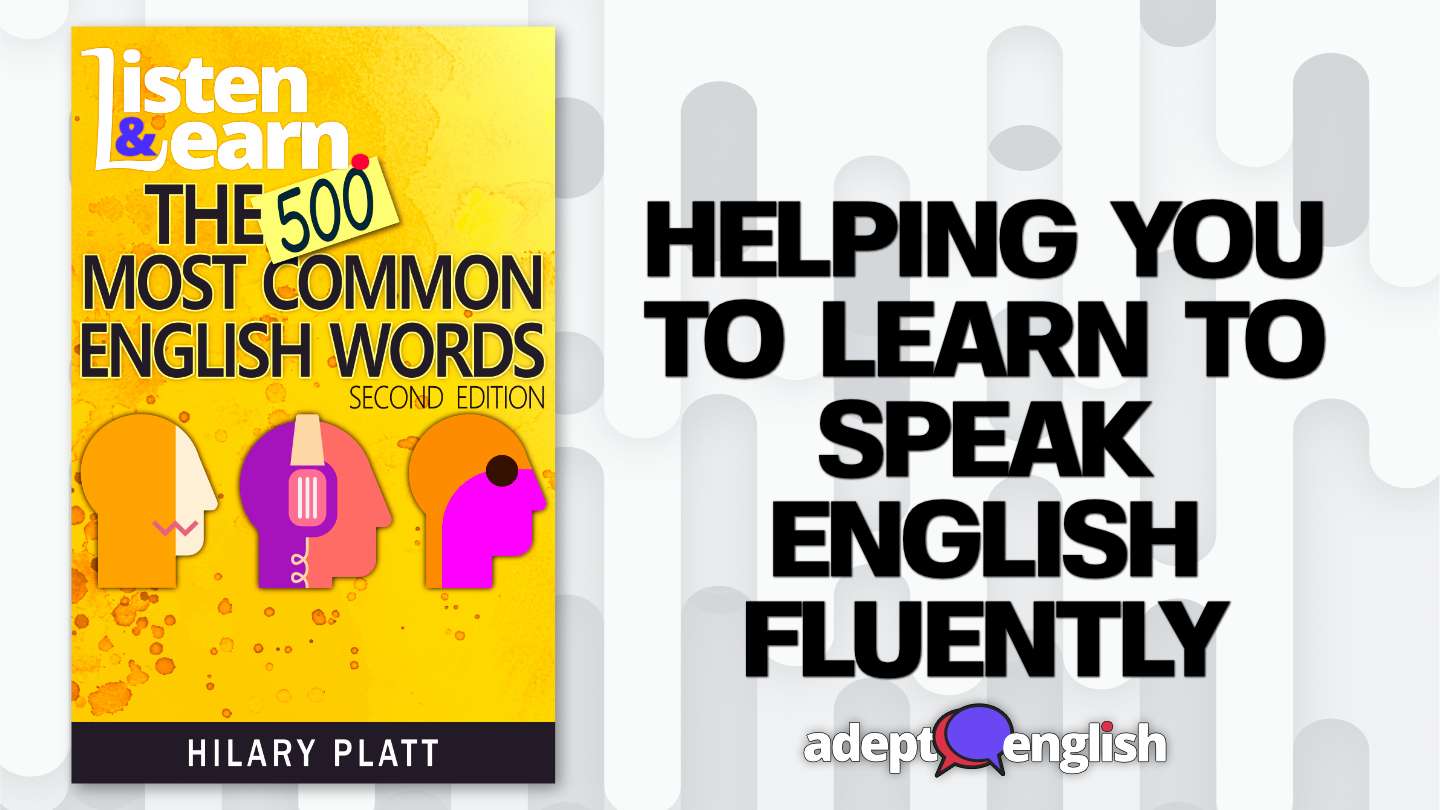Boring Grammar, English Language Rules You Will Eventually Break
Today we will go back to some basic grammar. English language learners really struggle with English grammar, mostly because English breaks its own grammar rules in special cases. You often find that a rule applies 80 percent of the time and then for just 20 percent of the time special cases apply and the rule is different. It’s frustrating to have to learn, and it results in grammar mistakes.
Grammar, English grammar especially, is usually boring and just hard work. So discovering that you can acquire grammar just by listening to native English speakers is often a surprise to new listeners of our English audio podcasts.
There is a big difference when we use the word ‘acquire’ vs ‘learn’ acquire is a process much more similar to the way you learned your first language as a child. A time when you were so young, before you could even read or write a language you were happily learning a language through listening.
A final point on learning just about anything. Plan your learning around making mistakes.
Sometimes we are our own worst critic and sometimes we listen to criticism when we should just ignore it. We should all accept that nobody is perfect. In your journey learning to speak English you will make a mistake, so why punish yourself for it. It’s better to recognise the mistake you’ve made and learn from it.
Most Unusual Words:
Apostrophe
Spelt
Fluency
Possessive
Most common 2 word phrases:
| Phrase | Count |
|---|---|
| English Grammar | 9 |
| Talking About | 6 |
| You Might | 5 |
| It’s Got | 4 |
| Of English | 4 |
Transcript: Basic Grammar English Students Should Know
Hi there and welcome to this latest podcast from Adept English. One of the things that people struggle with when learning English is grammar. English grammar can be hard. So it’s a while since we tackled any grammar in our podcasts, so shall we do some of that today? Learn English grammar online – that’s a good thing to do!
Fear of English Grammar!
So when people come to the subject of ‘grammar’, English language learners can think ‘Ugh, oh no, this is going to be difficult’ and the risk is that they switch off. That means that they stop listening, or they get distracted because they think that grammar learning is hard. And it can be.
There are some parts of English grammar which are hard to understand and need practice. But one of the aims of Adept English is to give you basic English grammar lessons in a way that is makes it easier to digest. Learning through listening is a great way, because it helps you arrive at that point, like an English speaker, where incorrect grammar ‘just sounds wrong’.
Many English speakers wouldn’t be able to explain what was wrong, but they just know bad grammar when they hear it or they read it. It’s also good to use lots of examples, then we make it stick in your mind! So this is probably an easier way to learn than trying to read an English grammar book!
MP3 Player
The mp3 audio and pdf transcript for this lesson is now part of the Adept English back catalogue . You can still download and listen to this lesson as part of one of our podcast bundles.So how about today we choose an example of bad grammar? English speakers make this mistake all the time. And for a change, let’s look at a written mistake – a mistake in how something is written down – which people might judge your standard of English by, or your standard of education perhaps. This is a really common mistake and you’ll see people make this mistake. This is English grammar basics, so good for you to learn.
It’s and Its
So what’s difference between it’s and its? So they sound the same, don’t they? But if you look at the transcript – available at adeptenglish.com, then you’ll see that one is spelt I-T-’-S and the other is spelt simply I-T-S. So maybe pause the podcast there and see if you can give an explanation, in English, to yourself - for what is the difference between those two. It’s and its.
How To Learn To Speak English-And He She Or They💛Ep 274
OK, so did you manage to do that? Well, the difference is this. If you are using it’s, spelt I-T-’-S, then this is usually short for ‘It is’. So we’re talking here third person singular, present tense of the verb ‘to be’. So you may be talking about the your car and you say ‘It’s blue’. But we often use ‘It is’ when we are making general observations about the world or the weather like ‘It’s raining’ or ‘It’s a shame that more people don’t play a musical instrument’. Or ‘It’s true that more people are doing their shopping online’. So these are examples of sentences with I-T-’-S when actually that’s short for ‘it is’. So you’ll know this form of the verb to be.
Buy An Adept English Course
Another possibility is that ‘it’s’, I-T-’-S is short for ‘it has’. So this is third person singular again, but this time of the verb ‘to have’. Now usually, if we’re talking about an ‘it’ possessing something, we would say the ‘has’, we wouldn’t shorten that.
So if you’re talking about a house, you would say ‘It has a blue door’, or ‘It has a large garden’. Where ‘it has’ does get shortened to ‘it’s’, I-T-’-S, well this is usually when it’s being used as part of a verb form. So you might say ‘It’s been interesting’ - this is short for ‘It has been interesting’. Or ‘It’s lost popularity’ means ‘It has lost popularity’.
Or even for present tense, you might say of the house with a blue door and a large garden ‘It’s got a blue door and ‘It’s got a large garden’. And here, the ‘it’s’ would be short for ‘it has’ got. That’s not particularly good English if you’re writing formally – it’s better to find a different verb. But ‘it’s got’ is fine in informal speech – you’ll hear that in conversation all the time.
So the other spelling of ‘its’ - where it doesn’t have the apostrophe, where it’s spelt simply I-T-S - how about you pause this podcast and try to think of a sentence which would use this form of ‘its’? See if you know the answer. OK – how did you do? Well, in order to make that sentence, you have to recognise that the word ‘its’, I-T-S is ‘a possessive pronoun’.
You might not know that phrase, but you’d know that you use ‘its’ when you’re talking about something belonging to a thing, something belongs to or is possessed by something else. So you might say ‘My car is blue. Its seats are grey and blue striped’. Or you might say ‘That plant has grown. Its roots are coming through the bottom of the pot’. Do you get the idea? In the first example, I’m talking about ‘the seats that belong to the car’, so ‘its seats’. And in the second example, I’m talking about ‘the roots belonging to the plant’, so ‘its roots’.
BBC Masterclass: Native-speaker 'mistakes'
Mistakes by English Speakers
So as I said, this is something which English speakers often get wrong, when they’re writing it down. Usually the mistake is to put the apostrophe in when it’s not needed, so to write I-T-’-S, when really they’re meaning the possessive pronoun I-T-S. I think it happens this way around, because the one with the apostrophe occurs more often.
ARTICLE Image
📷
A photograph of a couple talking in the beautiful village of Manarola, Cinque Terre, Liguria, Italy. Used to keep students interested in the boring English grammar lesson about its.
So how about we do some sentences so that you can practise? Just before we do that, let me recommend our 500 Most Common Words Course to you? It’s a whole lot of English Language Listening, but the course uses only the most common 500 Words in English.
So if you’re good at classroom English, you’re good at your English course and passing exams, but there’s difficulty when you come to speak and you lack fluency, then learning the most common 500 words is a really good idea. And learning through listening will help you remember the words automatically, when you come to speak. And therefore your fluency will improve. Check out our courses page today at adeptenglish.com and have a look at the Most Common 500 Words in English Course. You’ll be really glad that you did.
Practice Sentenpces for It’s and Its
OK, so let’s practise some sentences with it’s and its. I’ll read them out – you listen and try to write them down, in English of course. You can then test yourself to see if you know whether ‘it’s’ with an apostrophe or ‘its’ without an apostrophe. Which one is correct in each sentence? And if you’d like the answers, you just need to go to our website and look at the transcript. Have you got a pen and paper ready? Here goes with some English grammar sentence practice. I’ll read each one twice.
- The path is difficult - it’s going to be a long, hard journey.
- When we go to the house, shall we see if its roof needs repairing?
- Your English is improving - how do you think it’s going?
- It’s winter in the UK so today it’s raining and it’s cold
- The piano is damaged – its keys are loose.
- It’s been a long time since we ate cake!
- It’s got cold now – shall we go inside the house?
- What’s happened to this book? Its pages are all stuck together!
Download The Podcast Audio & Transcript
OK, so if you want to see the answers, go to our website at adeptenglish.com. See how many sentences you were able to write down correctly and with the correct form of ‘it’s/its’. Adept English and English grammar – your guide to error-free writing!
Goodbye
Enough for now. Have a lovely day. Speak to you again soon. Goodbye.









